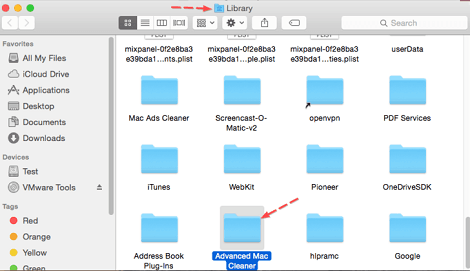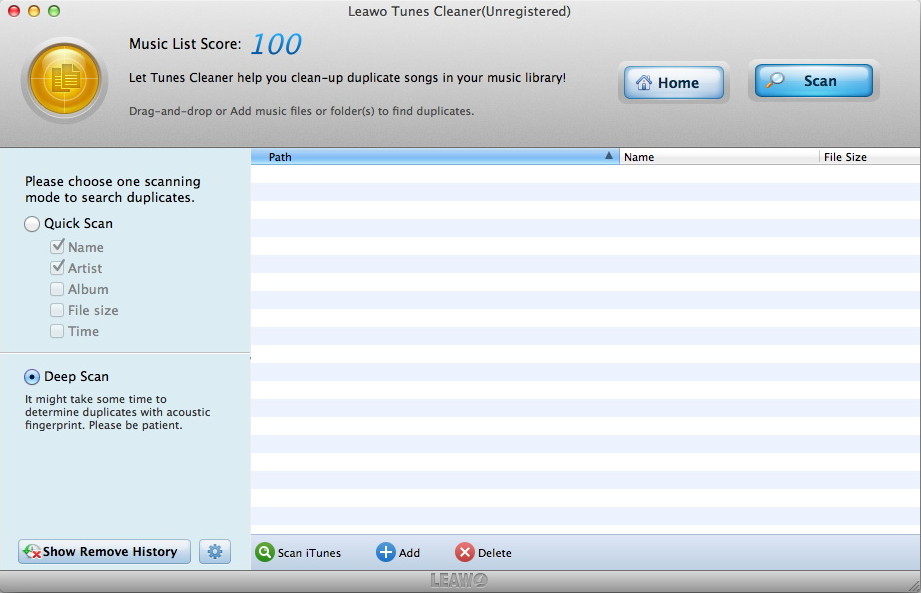Mac Library Cleaner
Optimized Storage in macOS Sierra and later* can save space by storing your content in iCloud and making it available on demand. When storage space is needed, files, photos, movies, email attachments, and other files that you seldom use are stored in iCloud automatically. Each file stays right where you last saved it, and downloads when you open it. Files that you’ve used recently remain on your Mac, along with optimized versions of your photos.
- Mac Cleaning Library Caches
- Mac Library Location
- Mac Cleaner Review
- Mac Cleaner Software
- Mac Cleaner Scam
- My Mac Library
- System Library Mac
- Music Library Cleaner
Advanced Mac Cleaner is crap software frequently found installed alongside adware (aka, ad-injection malware). It should be removed. Unfortunately, it worms its way deeply into the system, so removal isn't trivial. To remove it, make sure to quit the Advanced Mac Cleaner app, then drag it from the Applications folder into the trash. 2) Download and install Photos Duplicate Cleaner from the Mac App Store if you haven’t already, and then launch the app via your Applications folder, or by searching for it using Spotlight. 3) From the app’s interface, click on the “Add Photos Library” button.
* If you haven't yet upgraded to macOS Sierra or later, learn about other ways to free up storage space.
Find out how much storage is available on your Mac
Choose Apple menu > About This Mac, then click Storage. This is an overview of available storage space on your Mac, as well as the space used by different categories of files:
Click the Manage button to open the Storage Management window, pictured below. (The Manage button is available only in macOS Sierra or later.)
Manage storage on your Mac
The Storage Management window offers recommendations for optimizing your storage. If some recommendations are already turned on, you will see fewer recommendations.
Store in iCloud
Click the Store in iCloud button, then choose from these options:
- Desktop and Documents. Store all files from these two locations in iCloud Drive. When storage space is needed, only the files you recently opened are kept on your Mac, so that you can easily work offline. Files stored only in iCloud show a download icon , which you can double-click to download the original file. Learn more about this feature.
- Photos. Store all original, full-resolution photos and videos in iCloud Photos. When storage space is needed, only space-saving (optimized) versions of photos are kept on your Mac. To download the original photo or video, just open it.
- Messages. Store all messages and attachments in iCloud. When storage space is needed, only the messages and attachments you recently opened are kept on your Mac. Learn more about Messages in iCloud.
Storing files in iCloud uses the storage space in your iCloud storage plan. If you reach or exceed your iCloud storage limit, you can either buy more iCloud storage or make more iCloud storage available. iCloud storage starts at 50GB for $0.99 (USD) a month, and you can purchase additional storage directly from your Apple device. Learn more about prices in your region.
Optimize Storage
Click the Optimize button, then choose from these options.
- Automatically remove watched movies and TV shows. When storage space is needed, movies or TV shows that you purchased from the iTunes Store and already watched are removed from your Mac. Click the download icon next to a movie or TV show to download it again.
- Download only recent attachments. Mail automatically downloads only the attachments that you recently received. You can manually download any attachments at any time by opening the email or attachment, or saving the attachment to your Mac.
- Don't automatically download attachments. Mail downloads an attachment only when you open the email or attachment, or save the attachment to your Mac.
Optimizing storage for movies, TV shows, and email attachments doesn't require iCloud storage space.
Empty Trash Automatically
Empty Trash Automatically permanently deletes files that have been in the Trash for more than 30 days.
Reduce Clutter
Reduce Clutter helps you to identify large files and files you might no longer need. Click the Review Files button, then choose any of the file categories in the sidebar, such as Applications, Documents, Music Creation, or Trash.
You can delete the files in some categories directly from this window. Other categories show the total storage space used by the files in each app. You can then open the app and decide whether to delete files from within it.
Learn how to redownload apps, music, movies, TV shows, and books.
Where to find the settings for each feature
The button for each recommendation in the Storage Management window affects one or more settings in other apps. You can also control those settings directly within each app.
- If you're using macOS Catalina, choose Apple menu > System Preferences, click Apple ID, then select iCloud in the sidebar: Store in iCloud turns on the Optimize Mac Storage setting on the right. Then click Options next to iCloud Drive: Store in iCloud turns on the Desktop & Documents Folders setting. To turn off iCloud Drive entirely, deselect iCloud Drive.
In macOS Mojave or earlier, choose Apple menu > System Preferences, click iCloud, then click Options next to iCloud Drive. Store in iCloud turns on the Desktop & Documents Folders and Optimize Mac Storage settings. - In Photos, choose Photos > Preferences, then click iCloud. Store in iCloud selects iCloud Photos and Optimize Mac Storage.
- In Messages, choose Messages > Preferences, then click iMessage. Store in iCloud selects Enable Messages in iCloud.
- If you're using macOS Catalina, open the Apple TV app, choose TV > Preferences from the menu bar, then click Files. Optimize Storage selects “Automatically delete watched movies and TV shows.”
In macOS Mojave or earlier, open iTunes, choose iTunes > Preferences from the menu bar, then click Advanced. Optimize Storage selects “Automatically delete watched movies and TV shows.” - In Mail, choose Mail > Preferences from the menu bar, then click Accounts. In the Account Information section on the right, Optimize Storage sets the Download Attachments menu to either Recent or None.
Empty Trash Automatically: From the Finder, choose Finder > Preferences, then click Advanced. Empty Trash Automatically selects “Remove items from the Trash after 30 days.”
Other ways that macOS helps automatically save space
With macOS Sierra or later, your Mac automatically takes these additional steps to save storage space:
- Detects duplicate downloads in Safari, keeping only the most recent version of the download
- Reminds you to delete used app installers
- Removes old fonts, languages, and dictionaries that aren't being used
- Clears caches, logs, and other unnecessary data when storage space is needed
How to free up storage space manually
Even without using the Optimized Storage features of Sierra or later, you can take other steps to make more storage space available:
- Music, movies, and other media can use a lot of storage space. Learn how to delete music, movies, and TV shows from your device.
- Delete other files that you no longer need by moving them to the Trash, then emptying the Trash. The Downloads folder is good place to look for files that you might no longer need.
- Move files to an external storage device.
- Compress files.
- Delete unneeded email: In the Mail app, choose Mailbox > Erase Junk Mail. If you no longer need the email in your Trash mailbox, choose Mailbox > Erase Deleted Items.
Learn more
- When you duplicate a file on an APFS-formatted volume, that file doesn't use additional storage space on the volume. Deleting a duplicate file frees up only the space required by any data you might have added to the duplicate. If you no longer need any copies of the file, you can recover all of the storage space by deleting both the duplicate and the original file.
- If you're using a pro app and Optimize Mac Storage, learn how to make sure that your projects are always on your Mac and able to access their files.
Our marketing department called the IT department today and was seeing a big dialog box open about 'Mac Ads Cleaner' that had been installed on their MacOS systems. We had no idea at all how it got there. We tell them to try to quit it, removed it from autostart, and deleted the app out of the Applications folder. But the thing kept appearing again and again.Removing its stuff from the Library did not help either because another pop-up box appeared asking us to register Mac Ads Cleaner.
But our talented Steve figured out how to get rid of it.
Quick Fix
Restart into Safe Mode
Force quit the processes (Cmd+Option+Esc):
Advanced Password Manager
Mac Ads CleanerMalware Crusher
Unpollute My MacHold the shift key when rebooting until apple icon appears.
Remove the files
Run the following
find / -iname com.techy* -exec rm -rf {} ;
find / -iname hlpradc -exec rm -rf {} ;find / -iname adscleaner -exec rm -rf {} ;
find / -iname helperamc -exec rm -rf {} ;find / -iname ummhlpr -exec rm -rf {} ;
find / -iname amphelper -exec rm -rf {} ;
-exec rm -rf {} ;Details
Process Architecture
Creates per user daemons. So, there will be pieces in these locations:
~/Library/LaunchAgents
 /Library/LaunchAgents
/Library/LaunchAgents/Library/LaunchDaemons
There are files such as com.techyutils.ummhlpr.plistcom.techyutils.mchlpr.plist
Some of them may even have root ownership. Dont let that fool you.
Inspecting those files, the following suspicious items are found:
com.adscleaner.hlpradc.plist -> ~/Library/Application Support/adc/hlpradc.app/Contents/MacOS/hlpradc
com.mackeeper.MacKeeper.Helper.plist -> /Applications/MacKeeper.app/Contents/Services/MacKeeper Helper.app/Contents/MacOS/MacKeeper Helpercom.pcv.hlpramcn.plist
~/Library/Application Support/amc/helperamc.app/Contents/MacOS/helperamccom.pcvark.APMHelper
~/Library/Application Support/apm/APMHelper.app/Contents/MacOS/APMHelpercom.techyutils.mchlpr.plist
~/Library/Application Support/MCR/mchlpr.app/Contents/MacOS/mchlprcom.techyutils.ummhlpr.plist
~/Library/Application Support/umm/ummhlpr.app/Contents/MacOS/ummhlprGo ahead and remove the files.File Locations
Here is a sample cross referencing the places that have been affected:
find / -iname mchlpr.app
~/Library/Application Support/MCR/mchlpr.app/Applications/Malware Crusher.app/Contents/Resources/mchlpr.app
find / -iname com.techyutils*
/Applications/Malware Crusher.app/Contents/Resources/com.techyutils.mchlpr.plist/Applications/Unpollute My Mac.app/Contents/Resources/com.techyutils.ummhlpr.plist
~/Library/Application Support/com.apple.sharedfilelist/com.apple.LSSharedFileList.ApplicationRecentDocuments/com.techyutils.mac-ads-cleaner.sfl/Library/Application Support/MCR/com.techyutils.mchlpr.plist
/Library/Application Support/umm/com.techyutils.ummhlpr.plist~/Library/Caches/com.techyutils.Mac-Ads-Cleaner
~/Library/Caches/com.techyutils.Malware-Crusher~/Library/Caches/com.techyutils.mchlpr
Mac Cleaning Library Caches
~/Library/Caches/com.techyutils.ummhlpr~/Library/Cookies/com.techyutils.Mac-Ads-Cleaner.binarycookies
~/Library/Cookies/com.techyutils.Malware-Crusher.binarycookies~/Library/Preferences/com.techyutils.Mac-Ads-Cleaner.plist
~/Library/Preferences/com.techyutils.Malware-Crusher.plist~/Library/Preferences/com.techyutils.mchlpr.plist
~/Library/Preferences/com.techyutils.ummhlpr.plist~/Library/Saved Application State/com.techyutils.Mac-Ads-Cleaner.savedState
~/Library/Saved Application State/com.techyutils.Malware-Crusher.savedState find / -iname ummhlp*~/Library/Logs/ummhlpr.log
~/Library/Application Support/umm/ummhlpr.app~/Library/Application Support/umm/ummhlpr.app/Contents/MacOS/ummhlpr
/Applications/Unpollute My Mac.app/Contents/Resources/ummhlpr.app/Applications/Unpollute My Mac.app/Contents/Resources/ummhlpr.app/Contents/MacOS/ummhlpr
~/Library/Application Support>sudo find / -iname prmpsc*
/Applications/Unpollute My Mac.app/Contents/Resources/prmpsc.plist~/Library/Application Support/Unpollute My Mac/prmpsc.plist
~/Library/Application Support>sudo find / -iname settpsc*
Mac Library Location
/Applications/Unpollute My Mac.app/Contents/Resources/settpsc.plist~/Library/Application Support/Unpollute My Mac/settpsc.plist
~/Library/Application Support>sudo find / -iname hlpradc*
/Applications/Mac Ads Cleaner.app/Contents/Resources/hlpradc.app/Applications/Mac Ads Cleaner.app/Contents/Resources/hlpradc.app/Contents/MacOS/hlpradc
~/Library/Application Support/adc/hlpradc.app~/Library/Application Support/adc/hlpradc.app/Contents/MacOS/hlpradc
~/Library/hlpradc~/Library/Logs/hlpradc.log
~/Library/Application Support>sudo find / -iname com.ads* Dmg gamma 2000 ctx parts.
/Applications/Mac Ads Cleaner.app/Contents/Resources/com.adscleaner.hlpradc.plist~/Library/Application Support/adc/com.adscleaner.hlpradc.plist
~/Library/Application Support/com.apple.sharedfilelist/com.apple.LSSharedFileList.ApplicationRecentDocuments/com.adscleaner.hlpradc.sfl~/Library/Caches/com.adscleaner.hlpradc
~/Library/Preferences/com.adscleaner.hlpradc.plist ~/Library/Application Support>sudo find / -iname com.pcva*Mac Cleaner Review
/Applications/Advanced Password Manager.app/Contents/Resources/com.pcvark.APMHelper.plist
/private/var/db/receipts/com.pcvark.advancedPasswordManagerUpdate.Root.pkg.bom/private/var/db/receipts/com.pcvark.advancedPasswordManagerUpdate.Root.pkg.plist
~/Library/Application Support>sudo find / -iname apmhelper*/Applications/Advanced Password Manager.app/Contents/Resources/APMHelper.app
/Applications/Advanced Password Manager.app/Contents/Resources/APMHelper.app/Contents/MacOS/APMHelper~/Library/Application Support/apm/APMHelper.app
~/Library/Application Support/apm/APMHelper.app/Contents/MacOS/APMHelper~/Library/Logs/APMHelper.log
~/Library/Application Support>sudo find / -iname Mac File*
~/Library/Application Support/Mac File Opener~/Library/Application Support/Mac File Opener/Mac File Opener.app/Contents/MacOS/Mac File Opener
Items to remove
~/Library/Application Support/Unpollute My Mac
/Applications/Unpollute My Mac.app /Applications/Mac Ads Cleaner.appMac Cleaner Software
~/Library/Application Support/adc
~/Library/hlpradc ~/Library/LaunchAgents/com.pcvark.APMHelper.plist~/Library/Application Support/apm
Mac Cleaner Scam
/Applications/Advanced Password Manager.app ~/Library/Application Support/Mac File OpenerMy Mac Library
Postmorterm
There are log files left behind that you can inspect to gain insight:
System Library Mac
~/Library/Logs/ummhlpr.log
Things you can figure out:
Time it was installed: i.e. time stamp 2017-04-07 11:49:26
Their campaign tracking info for the the distibutor of the software.Music Library Cleaner
The files associated with it.